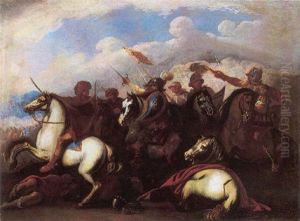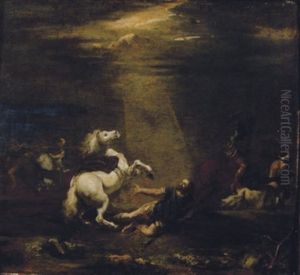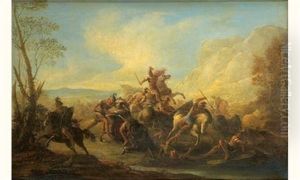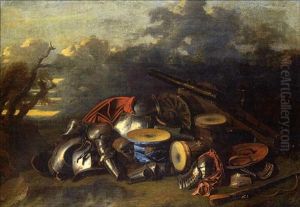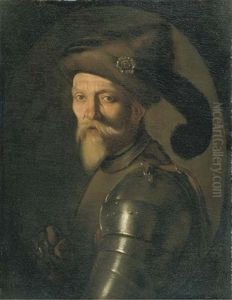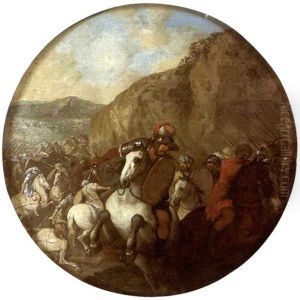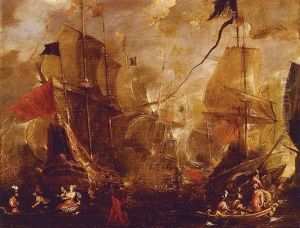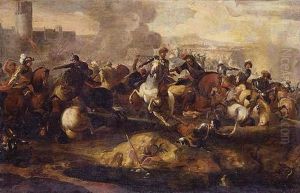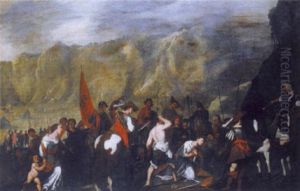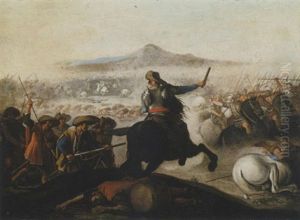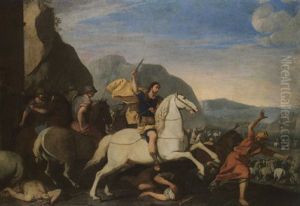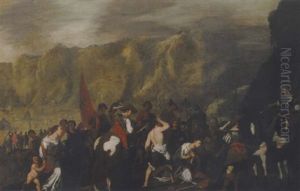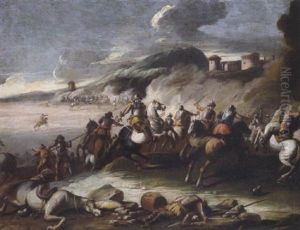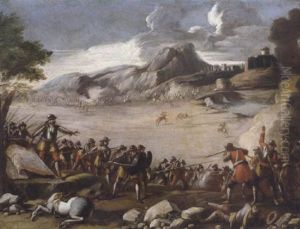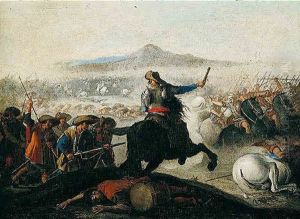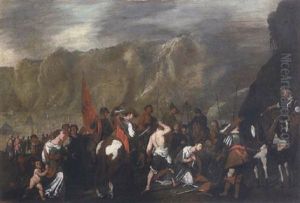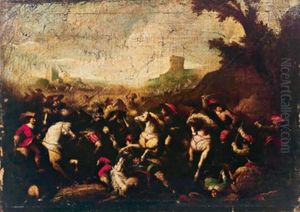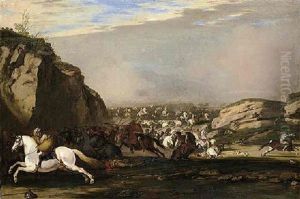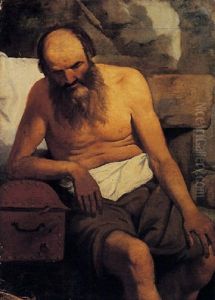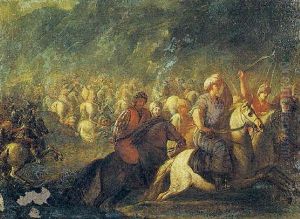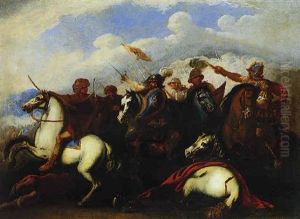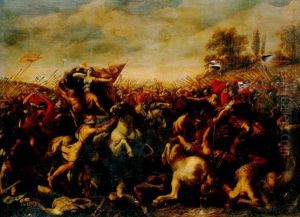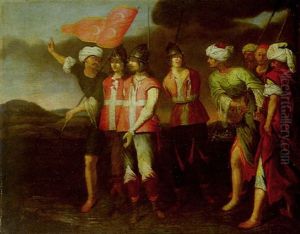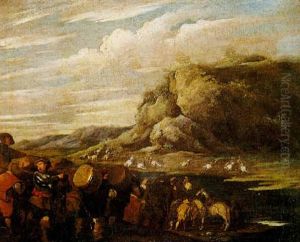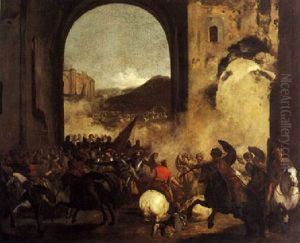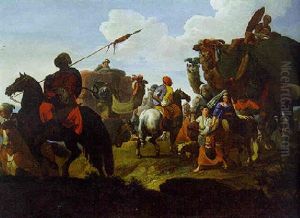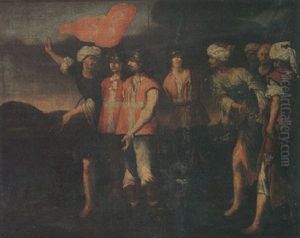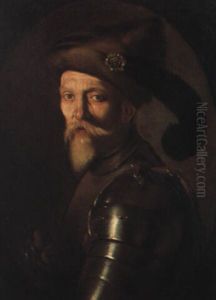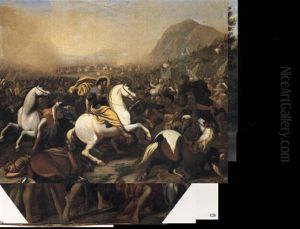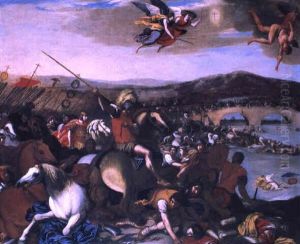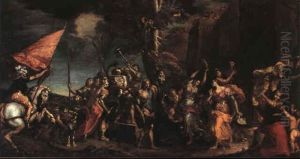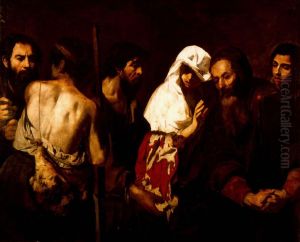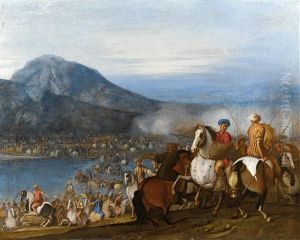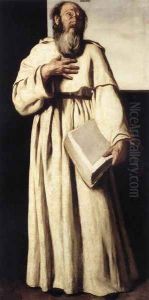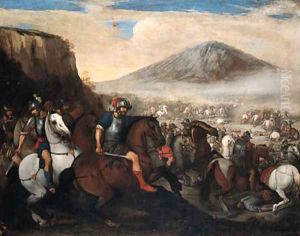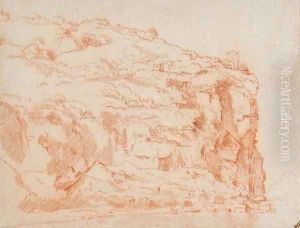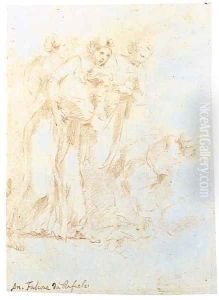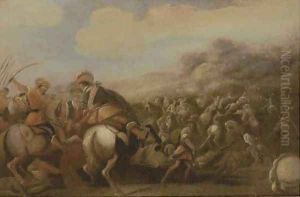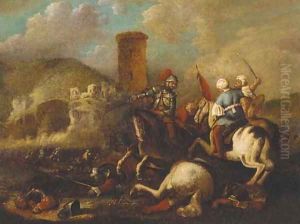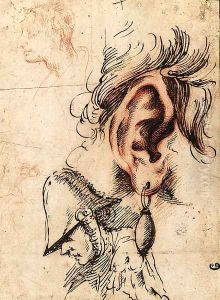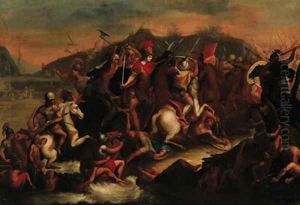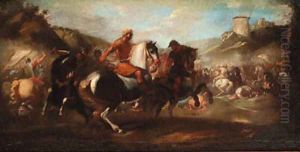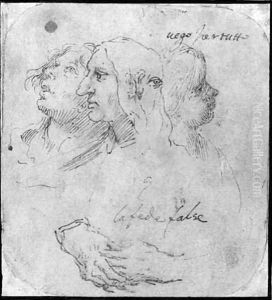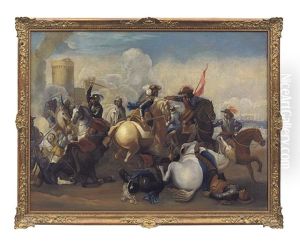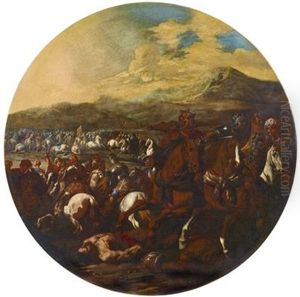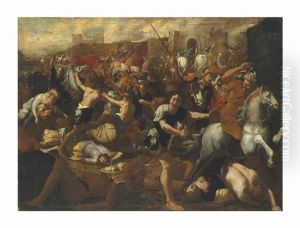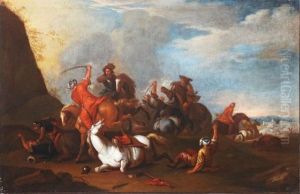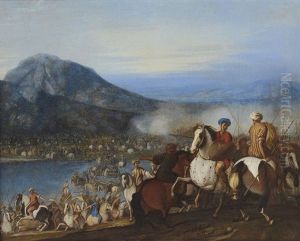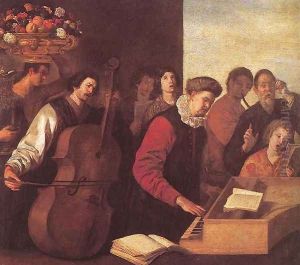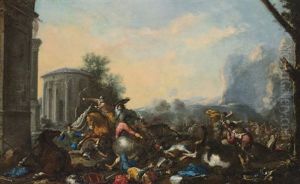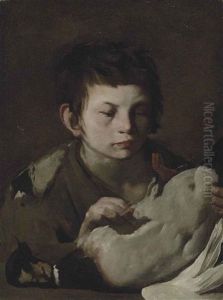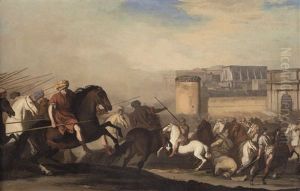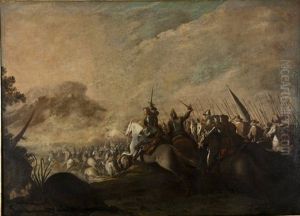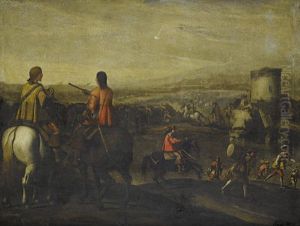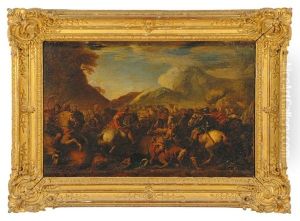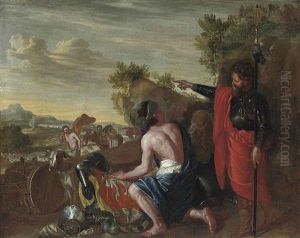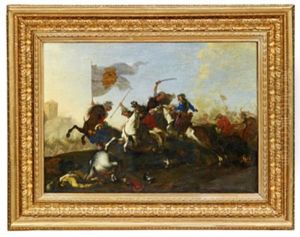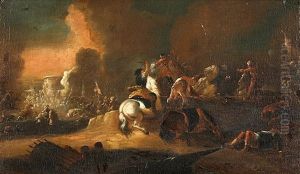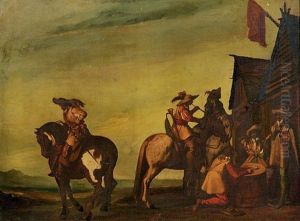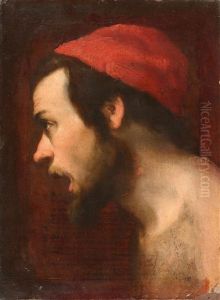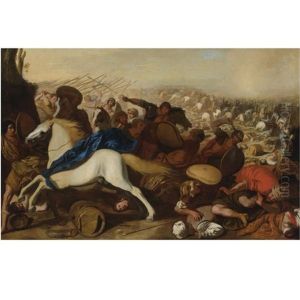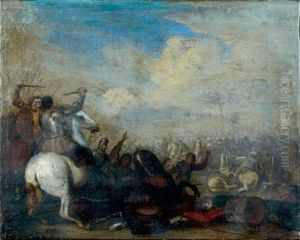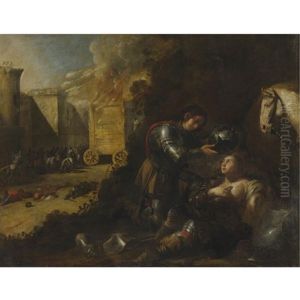Aniello Falcone Paintings
Aniello Falcone was an Italian Baroque painter, born in 1607 in Naples, Italy. He was one of the leading figures of the Neapolitan school of painting, and he is most renowned for his battle scenes and historical paintings, which were a popular genre in Naples at the time. His work is characterized by dynamic compositions, robust figures, and a dramatic use of light and shadow, showcasing the influence of the naturalism and tenebrism of Caravaggio, which was prevalent among Neapolitan artists.
Falcone was a pupil of the painter Francesco Guarino in his early years and was also influenced by the works of Ribera. Throughout his career, Falcone developed a distinctive style that earned him the nickname 'Oracolo delle Battaglie' (Oracle of Battles) for his skill in depicting military engagements with great vigor and precision. His paintings often featured armed conflicts, duels, and soldiers at rest, and they were celebrated for their lively realism and attention to detail.
In addition to his battle scenes, Falcone painted religious subjects and was involved in decorating various churches in Naples. He played a significant role in the artistic community of Naples and influenced a number of younger painters, including his notable pupil, Salvator Rosa, who also became a prominent Baroque artist.
Falcone's life was marked by the tumultuous political climate of Naples in the mid-17th century. He was associated with the Compagnia della Morte, a group of artists and intellectuals who supported Masaniello's revolt against Spanish rule in 1647. Following the suppression of the revolt, Falcones' involvement led to a period of difficulty for the artist, and he had to live in hiding for a time.
Aniello Falcone's contributions to Baroque art left a lasting legacy in the Neapolitan school and beyond. He continued to work until his death in 1656 in Naples, where he left a strong impact on the directions of Neapolitan painting for future generations.
